Mark D. Taylor
I thought it might be helpful if I commented on the NLT’s frequent use of “Hebrew” and “Greek” footnotes. Both of my examples are from the second edition text (2004 or 2007).
Example 1: In Gen 6:2, the NLT text reads, “The sons of God saw the beautiful women* and took any they wanted as their wives.” (The asterisk, which is found in most editions of the NLT, points to a text note. But the NLT Study Bible does not use asterisks, since all of the NLT text notes are incorporated into the study notes.) The NLT text note reads, “6:2 Hebrew daughters of men; also in 6:4.”
The purpose of the text note is to give the reader a glimpse into the Hebrew text behind the English word “women.” Most English translations simply translate it literally: “daughters of men.” But there are varying interpretations as to what this Hebrew expression means. After long and vigorous discussion, the Bible Translation Committee decided to select one of several possible meanings for the text of the translation. But we wanted our readers to know that this is an interpretive rendering–and other translations may well go different directions. The phrase “also in 6:4” simply means that the same Hebrew phrase occurs in 6:4, where the NLT again renders it “women.” (The expanded note in the NLT Study Bible fleshes out various possible meanings of “sons of God” and “daughters of men.”)
Example 2: In Matt 1:1, the NLT reads, “This is the record of the ancestors of Jesus the Messiah, a descendant of David* and of Abraham.” The footnote reads, “1:1 Greek Jesus the Messiah, son of David.“
Again, most translations simply use a literal rendering for huiou Dauid as “son of David.” But in contemporary English, the word “son” almost always means a male descendant in the immediate next generation. If my grandfather had ever referred to me as “my son Mark,” it would have been confusing. My grandfather’s son (in the immediate next generation) was named Kenneth, and Kenneth’s son (in the immediate next generation) is Mark. The NLT translators were concerned that the reader might misunderstand the term “son of David” as referring to a literal father-son relationship between David and Jesus. So we rendered the Greek phrase as “a descendant of David.”
On the other hand, however, “Son of David” has messianic overtones, as is clearly seen in Matt 21:9; 22:42; etc. So our footnote at Matt 1:1 alerts the reader to the fact that the Greek term behind “a descendant of David” is more literally rendered “son of David.” (The study note in the NLT Study Bible explicitly mentions the connection between the phrase “son of David” and the “Messiah.”)
One advantage to these notes, we think, is that pastors or Bible study leaders who are using the NLT can simply point to the footnote to show the more literal rendering. Then they can expand on the various nuances of meaning of a term such as “son of David.” And hopefully they won’t be tempted to say, “The NLT is a little too expansive here, because the Greek really means ‘son of David.'” (But then they would go on to explain that “son of David” doesn’t really mean “son of David” as we would normally use the expression in English!)
So the “Hebrew” and “Greek” footnotes are fairly simple, but they carry a lot of freight!

I have an NLT Study Bible. In many passages there is an *. I cannot find anything which describes what the * means. Please explain why it is there.
Thank you.